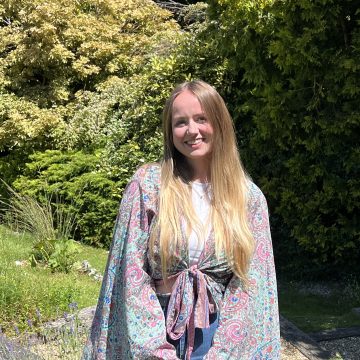Explore Laikipia’s conservancies – a patchwork of private ranches and luxury lodges where wildlife thrives and exclusivity is the norm. Wide open spaces also means more adventurous game-viewing.
Scroll for more
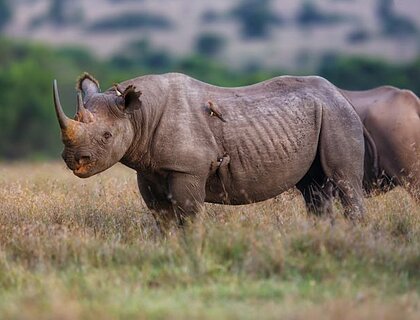
It’s the perfect complement to the Masai Mara offering exclusivity, rare species, and a greater range of safari activities.
Here, conservation and community work together. Landowners, ranchers, and local ethnic groups came together in the 1990s to protect wildlife, making Laikipia the only region in East Africa where wildlife numbers are increasing. This means a safari that combines exclusivity, rich wildlife, and the chance to be part of a remarkable conservation story.
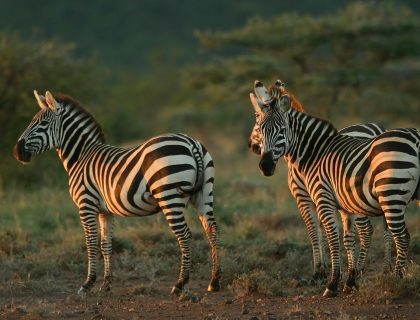
The lodges and camps of Laikipia are intimate, often family-owned, and unashamedly stylish. Many are set on private land, which allows for activities beyond the usual game drives: bush walks, camel trekking, mountain biking, or even horse riding.
The key attribute of the Laikipia safari camps is exclusivity.
Loisaba is a 61,000-acre private game conservancy in the heart of Laikipia. Here you can sleep under the stars in a custom-designed sky bed, while Sosian Lodge and Ol Malo House offer private, characterful stays.
Several Laikipia conservancies are run in close partnership with Maasai and Samburu communities, creating a rare model where traditional pastoralism and luxury tourism co-exist.
Fact: Laikipia has one of the largest elephant populations in East Africa, with herds migrating seasonally across conservancies.
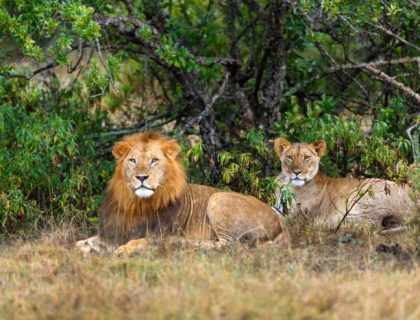 Ol Pejeta Conservancy in southern Laikipia is famous for its thriving rhino population of both white and black rhino. It also boasts reticulated giraffe, the rare Grevy’s zebra, plenty of plains game as well as excellent predator sightings.
Ol Pejeta Conservancy in southern Laikipia is famous for its thriving rhino population of both white and black rhino. It also boasts reticulated giraffe, the rare Grevy’s zebra, plenty of plains game as well as excellent predator sightings.
In fact Ol Pejeta Conservancy has the highest resident game-to-area ratio of any park or reserve in Kenya.
Bush camps such as Porini Rhino Camp and Kicheche Laikipia Camp offer authentic safari experiences, while Ol Pejeta Bush Camp brings conservation work to life with first-hand insights.
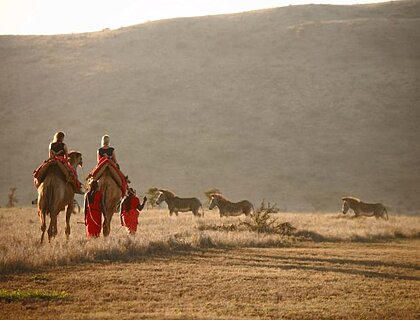
From Lewa you can also visit the Ngare Ndare forest for forest walks including a treetop walk, excellent for keen birders.
Lewa is also renowned for its research and community projects. Staying here, at places like Lewa Safari Camp or Lewa House, you’ll find evenings often include fascinating discussions with conservationists. As Lewa Wildlife Conservancy (LWC) researchers and staff are often around to share their findings with lodge guests.
Laikipia offers some of Kenya’s most rewarding safaris, but always with a feeling of seclusion and privilege – far from the busier circuits, yet second to none for wildlife and experience.
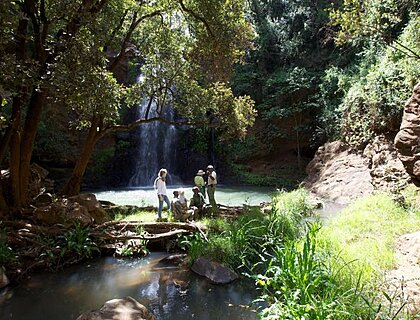
The simple answer is fewer visitors, more activities beyond game drives, and unique wildlife such as Grevy’s zebra and wild dog.
What kinds of safari activities can I do in Laikipia?
Each safari ranch differs but include walking, camel trekking, mountain biking, horse riding, as well as traditional game drives. Plus wonderful star bed sleep-outs at some lodges.
Is Laikipia suitable for families?
Absolutely, the privacy and flexibility of bush homes and ranches make it particularly appealing for multi-generational safaris.
Talk to us about Laikipia – from rhino sanctuaries to luxury bush homes, it’s one of Kenya’s most rewarding safari regions.
Back to main Kenya safari page.
